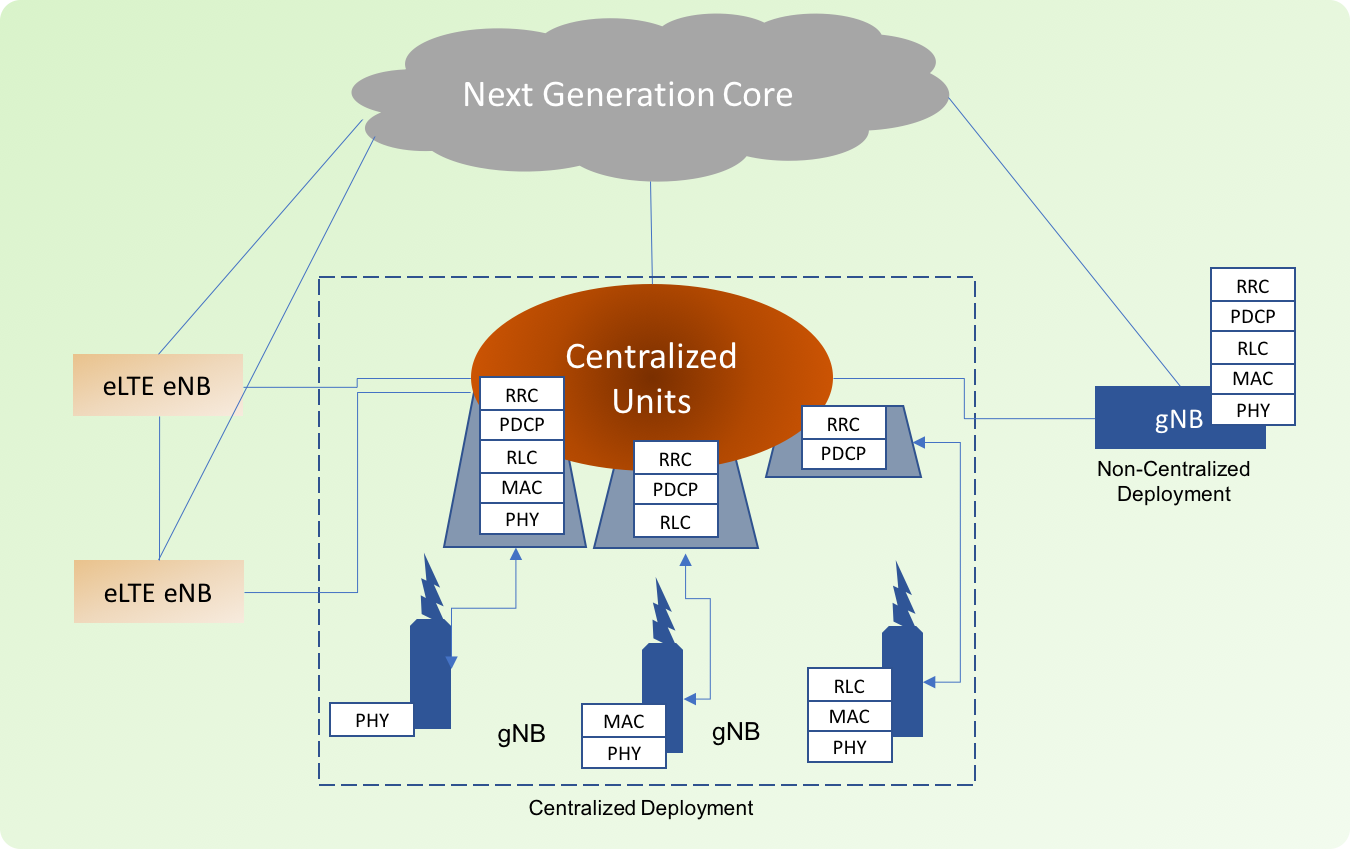With 5G, network functions virtualisation is making in-roads in Radio Access Networks as well as the Core Network. Telecom operators will have newer flexible deployment options with virtualised RAN offering additional ways to increase network capacity, coverage and user experience while reducing time to market for new services.
With 5G, network functions virtualisation is making in-roads in Radio Access Networks as well as the Core Network. Telecom operators will have newer flexible deployment options with virtualised RAN offering additional ways to increase network capacity, coverage and user experience while reducing time to market for new services.
New radio network deployment will be a mix of both distributed and centralized RAN architecture with virtualised components to meet stringent access requirements. Coordination among the nodes will be the key.
A quick recap of 5G throughput and latency requirements is as following
- Peak data rate: 20Gbps DL 10Gbps UL
- Peak Spectral efficiency: 30bps/Hz – 15bps/Hz
- Control plane latency: 10ms
- User plane latency: URLLC: 0.5ms UL&DL
To work it out, network infrastructure will have to support many additional bands along with existing ones at air interface, however there is a need for revolutionary reworking of RAN architecture which so far consists of Single Node (eNB) in LTE or Dual Nodes (NodeB/RNC pair in 3G; BTS/BSC pair in 2G).

5G RAN architecture evolution will allow Control-plane/User-plane separation and support different options and flexibility for splitting the RAN architecture to enable context-aware service delivery and low latency services. The design will allow the deployment of new services rapidly and efficiently.
5G RAT consists of eLTE eNBs (evolution of eNB that supports connectivity to EPC and Next-generation 5G Core) and gNB (5G New Radio) which can be deployed under different configurations/scenarios.
With non-centralized deployment (i.e. distributed), complete protocol stack is on gNB and it will be suitable for macro deployment or indoor hotspot environments.
With centralised deployment, upper layers of the 5G New Radio stack are centralised. Protocol split between Central Unit and lower layers of gNB nodes depends on the transport layer.
High-performance transport can enable advanced CoMP schemes and scheduling optimization. This is beneficial in high capacity scenarios. Low-performance transport can enable the higher protocol layers of the NR radio stacks to be supported in the Central Unit. CoMP (Coordinated Multi Point) feature allows simultaneous processing of User Equipment (UE) signal at multiple base stations or cell sectors improving cell-edge performance and network efficiency.
With deployment flexibility to split and move New Radio (NR) functions between central and distributed units, new architecture allows flexible HW implementations for scalable cost-effective solutions. The split architecture offers coordination for performance features, load management, real-time performance optimization, and enables usage of Network Function Virtualisation (NFV)/ Software Defined Networking (SDN).
Protocol stack in Centralised Unit (CU) can be deployed using NFV. For example, Radio Interface protocol layer RRC could be placed in the central unit and PDCP, RLC, MAC, physical layer/RF kept in the distributed unit. Or RRC, PDCP are placed in the central unit whereas RLC, MAC, physical layer/RF are put in the distributed unit. 3GPP specifications provide flexibility to split lower and upper layer protocols in multiple ways that could be distributed in between central unit and distributed unit.
The splitting of NR functions will depend on QoS settings requirements as per offered services e.g. low latency, high throughput or based on load/capacity need of a geographical area. Architecture should be flexible enough to move RAN functions between the central unit and distributed unit accordingly.
With NFV as a choice to implement NR functions, 5G is all set to make flexible and dynamic split architecture a reality. The inherent capability to instantiate network functions on demand, NFV driven 5G architecture will allow dynamic interworking between cells and enable the real-time radio coordination based on the degree of RAN centralisation and the transport network capabilities.
Republished from the blog.
